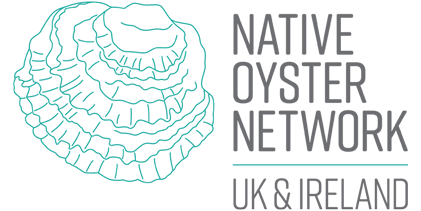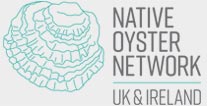Open Consultation on European Native Oyster Restoration Monitoring Guidelines
NORA and the Native Oyster Network- UK and Ireland have been partnering to develop a Guidelines for monitoring native oyster restoration projects in Europe.
Universal and consistent monitoring of restoration efforts across Europe would yield a suite of benefits. As a practice in its infancy, monitoring of native oyster restoration will allow for a greater understanding of the drivers of success or failure across projects, and for consistent reporting to funders. Furthermore it would allow for a clearer understanding of the potential of the habitat across its full range, something which is severely lacking given its highly degraded status. And finally, it would allow for the accumulation of a wider evidence base on which to communicate the potential outcomes of restoration to stakeholders and funders.
The Native Oyster Network- UK and Ireland and the Native Oyster Restoration Alliance identified that there were several novel metrics and methods in use in Europe that were not already included in the comprehensive must read from the US, Baggett et al. 2014 (LINK https://www.oyster-restoration.org/oyster-habitat-restoration-monitoring-and-assessment-handbook/). Differences between the species, abiotic settings and the degraded status and dynamic locations that the native oyster in Europe inhabits, means that some of the suggested methodologies are often not suitable for monitoring in Europe. Thirty-nine authors from seven European countries have therefore collaborated to develop a set of Universal Monitoring Metrics, Supplementary Metrics, and Ecosystem Goal Based Metrics. A series of possible methods are outlined for each metric.
The Metrics are designed to answer critical questions around the performance of European native oyster restoration activities. The Universal Metrics are recommended to be monitored by all restoration projects, while the Supplementary Metrics provide more information about the possible drivers of restoration progress, and the restoration Goal Based Metrics are for assessing the progress towards achieving stated goals other than the recovery of oyster habitat.
NORA and the Native Oyster Network are hugely grateful to all those who have contributed to this effort so far.
The aims of consultation
NORA and UK-Ireland NON are seeking to develop a widely accepted and useful product to support oyster restoration in Europe. This can best be achieved by ensuring that all those with experience in native oyster restoration are able to provide input and comments, and are given the opportunity to critically assess the advice provided in the guide. With the current online consultation process the networks aim to ensure the active engagement of experts and stakeholders, and provide all with a mechanism for contributing to the development of the resulting guidelines. After evaluating the comments and suggestions, a final version of the guidelines will be published and launched in the summer of 2021.
Explicitly we would be grateful if participant in the consultation could consider:
- If you have undertaken native oyster restoration habitat monitoring, are the methods that you commonly use included?
- Have you tried methods presented, but they didn’t work?
- Does the existing text equip you to what you need to do?
- Does the method description provide enough information to allow the method to be followed?
- Is there anything in the handbook that is a barrier to common monitoring?
The draft is still in development and we welcome the opportunity to incorporate any suggestions in the final version. In particular please bear in mind that the final figures and infographics are yet to be developed. If you have images illustrating any of the techniques or equipment which you would be willing to contribute to the guidelines, please do let us know.
Please make all comments and suggested additions as “suggestions” in the online version of the guidelines. You are also welcome to e-mail comments to NORA and UK-Ireland NON network coordinators at: secretariat@noraeurope.eu and nativeoyster@zsl.org
The Draft European Native Oyster Monitoring Guidelines can be accessed here: https://docs.google.com/document/d/1VVQKYQCxizVOZ8g9T0-KBRYaxqKsKVDj9ImhyUaAiqw/edit?usp=sharing
The timeline
We would be grateful for comments and responses up to COB on the 25th May 2010. Thereafter the editorial and design team will address any comments and suggested edits and launch the guidelines in the summer 2021. The authors and editorial team are hugely grateful to all those taking the time to review the document, and we look forward to receiving constructive comments, edits and additions.
GPDR
We take our responsibility of safeguarding your personal data seriously. In the interest of being able to contact you with regards to any comments made, we would be grateful if you could provide your name alongside any comments. Any contact information provided (in the document or by e-mail) will be used solely for the purpose of contacting individuals in case clarifications are needed regarding their feedback or comments. By providing comments it is implicit that you have read, and give your consent to being contacted if clarification is required. Should you wish to, you will be able to contribute comments anonymously to the consultation document.
Should you have any questions about the consultation process please contact us: secretariat@noraeurope.eu and nativeoyster@zsl.org



